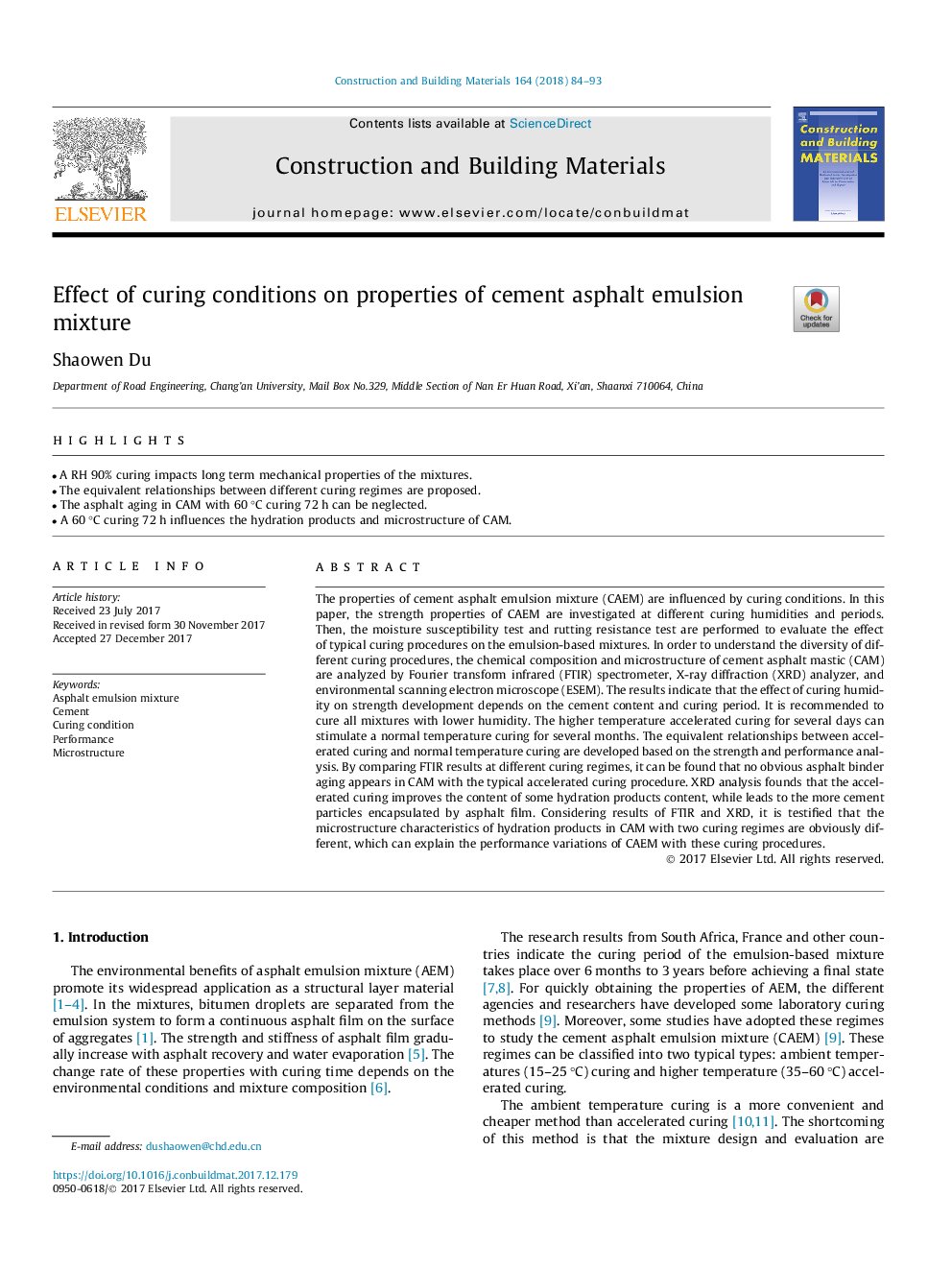| Article ID | Journal | Published Year | Pages | File Type |
|---|---|---|---|---|
| 6715866 | Construction and Building Materials | 2018 | 10 Pages |
Abstract
The properties of cement asphalt emulsion mixture (CAEM) are influenced by curing conditions. In this paper, the strength properties of CAEM are investigated at different curing humidities and periods. Then, the moisture susceptibility test and rutting resistance test are performed to evaluate the effect of typical curing procedures on the emulsion-based mixtures. In order to understand the diversity of different curing procedures, the chemical composition and microstructure of cement asphalt mastic (CAM) are analyzed by Fourier transform infrared (FTIR) spectrometer, X-ray diffraction (XRD) analyzer, and environmental scanning electron microscope (ESEM). The results indicate that the effect of curing humidity on strength development depends on the cement content and curing period. It is recommended to cure all mixtures with lower humidity. The higher temperature accelerated curing for several days can stimulate a normal temperature curing for several months. The equivalent relationships between accelerated curing and normal temperature curing are developed based on the strength and performance analysis. By comparing FTIR results at different curing regimes, it can be found that no obvious asphalt binder aging appears in CAM with the typical accelerated curing procedure. XRD analysis founds that the accelerated curing improves the content of some hydration products content, while leads to the more cement particles encapsulated by asphalt film. Considering results of FTIR and XRD, it is testified that the microstructure characteristics of hydration products in CAM with two curing regimes are obviously different, which can explain the performance variations of CAEM with these curing procedures.
Related Topics
Physical Sciences and Engineering
Engineering
Civil and Structural Engineering
Authors
Shaowen Du,
